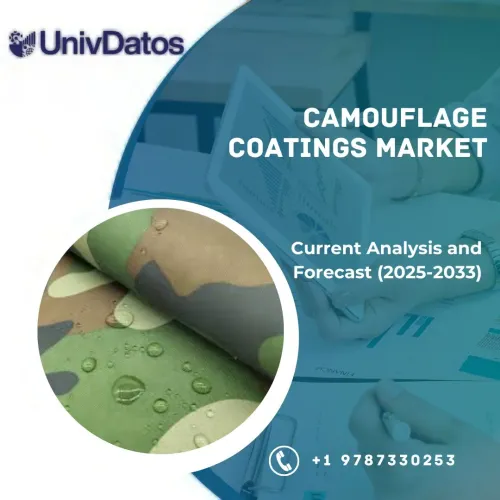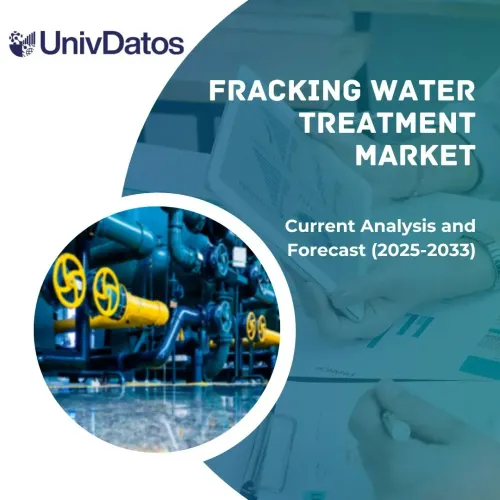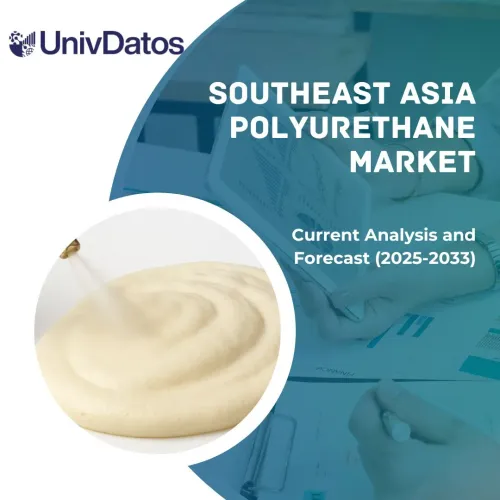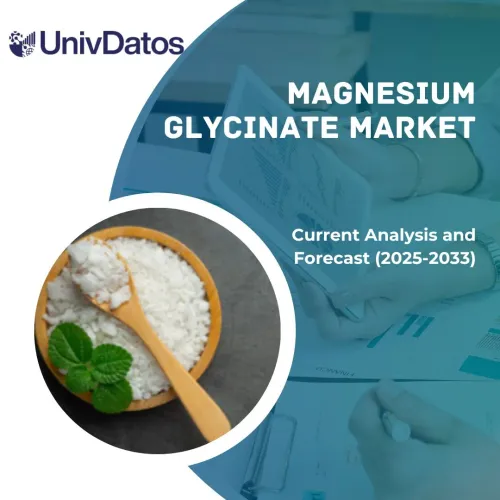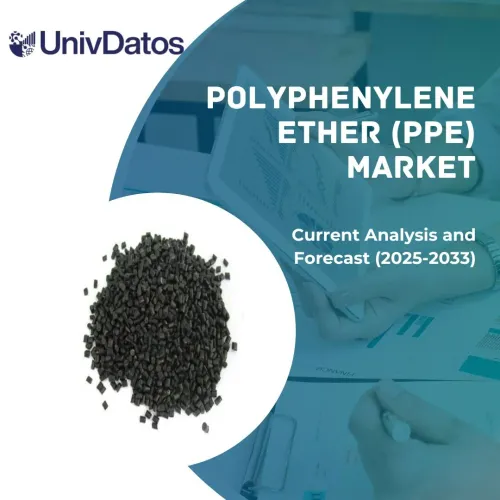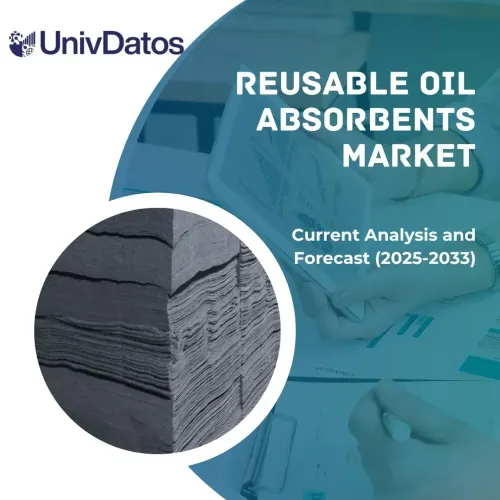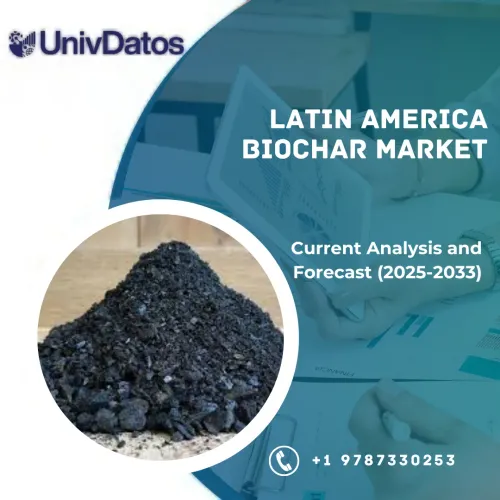- Trang chủ
- Về chúng tôi
- Ngành
- Dịch vụ
- Đọc
- Liên hệ với chúng tôi
Thị trường Lớp phủ Kháng vi-rút & Kháng khuẩn: Phân tích Hiện tại và Dự báo (2024-2032)
Nhấn mạnh vào Vật liệu (Bạc, Vật liệu hữu cơ, Đồng, Titan Oxit và các loại khác); Dạng (Lỏng, Bột và Aerosol); Ứng dụng (Chăm sóc sức khỏe, Xây dựng & Công trình, Thực phẩm & Đồ uống, Đóng gói, Ô tô và các loại khác); Khu vực/Quốc gia
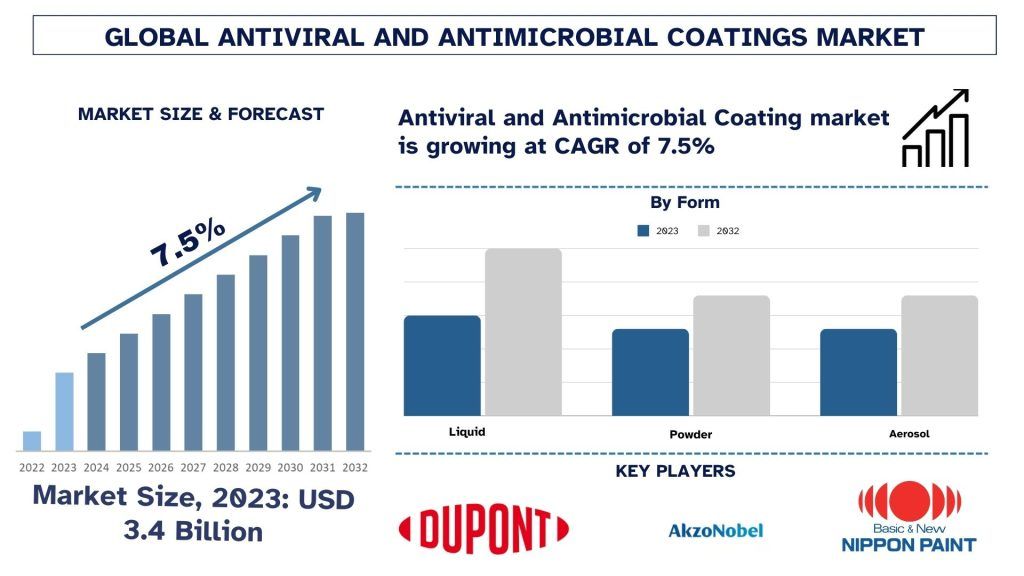
Quy mô & Dự báo Thị trường Lớp phủ Kháng virus và Kháng khuẩn
Thị trường Lớp phủ Kháng virus và Kháng khuẩn được định giá khoảng 3,4 tỷ USD vào năm 2023 và dự kiến sẽ tăng trưởng với tốc độ CAGR mạnh mẽ khoảng 7,5% trong giai đoạn dự báo (2024-2032). Nhìn chung, nhu cầu ngày càng tăng đối với các phương pháp điều trị kiểm soát nhiễm trùng trong thị trường hậu đại dịch là yếu tố chính thúc đẩy sự phát triển của thị trường lớp phủ kháng virus và kháng khuẩn.
Phân tích Thị trường Lớp phủ Kháng virus và Kháng khuẩn
Lớp phủ kháng virus & kháng khuẩn được ứng dụng cho các thiết bị khác nhau và các thiết bị khác có tác dụng hạn chế sự phát triển của các loại virus và vi sinh vật khác nhau. Các lớp phủ này giúp duy trì vệ sinh lâu dài bằng cách cung cấp khả năng bảo vệ lâu dài chống lại các vi sinh vật.
Với sự tiến bộ công nghệ nhanh chóng và sự gia tăng đầu tư vào nghiên cứu & phát triển các lớp phủ này, nhiều công ty tham gia thị trường lớp phủ kháng virus & kháng khuẩn đang tung ra các sản phẩm mới và sáng tạo, từ đó thúc đẩy thị trường trên toàn cầu. Ví dụ, vào tháng 5 năm 2021, thương hiệu COMEX của PPG gần đây đã ra mắt sơn Comex VINIMEX TOTAL Antiviral and Antibacterial giúp giảm tới 99,9% vi khuẩn và virus gây ra các bệnh về đường tiêu hóa và hô hấp phổ biến nhất, bao gồm cúm A H1N1 và virus COVID-19, SARS-CoV-2. Hơn nữa, nhận thức ngày càng tăng về việc sử dụng các lớp phủ này để duy trì vệ sinh đang thúc đẩy hơn nữa sự tăng trưởng của thị trường này.
Hơn nữa, sự gia tăng tỷ lệ mắc các bệnh truyền nhiễm và nhiễm trùng liên quan đến bệnh viện cùng với các ứng dụng đang phát triển nhanh chóng trong nhiều lĩnh vực khác nhau bao gồm ô tô, thực phẩm & đồ uống, xây dựng và nhiều lĩnh vực khác. Bên cạnh đó, thị trường cũng đang tăng trưởng đáng kể nhờ nhu cầu ngày càng tăng đối với lớp phủ kháng khuẩn để sản xuất quần áo bảo hộ chống lại COVID-19. Cho rằng điều này, nhiều công ty thành lập và các công ty khởi nghiệp đang phát triển nhiều loại quần áo bảo hộ. Ví dụ, vào năm 2020, IIT đã phát triển lớp phủ kháng khuẩn dạng xịt cho Thiết bị Bảo vệ Cá nhân, bao gồm cả khẩu trang, có thể tiêu diệt hơn 99,9% vi khuẩn và virus.
Xu hướng Thị trường Lớp phủ Kháng virus và Kháng khuẩn
Phần này thảo luận về các xu hướng thị trường chính ảnh hưởng đến các phân khúc Lớp phủ Kháng virus và Kháng khuẩn do các chuyên gia nghiên cứu của chúng tôi xác định.
Phân khúc Bạc đang Chuyển đổi Ngành
Phân khúc bạc chiếm một thị phần đáng kể trong thị trường lớp phủ kháng virus và kháng khuẩn vào năm 2023 và ước tính rằng nó sẽ thể hiện CAGR cao nhất trong giai đoạn dự báo. Điều này là do bạc đã được sử dụng rộng rãi nhất như một chất kháng khuẩn và kháng virus vì nó độc hại đối với vi sinh vật và không cho thấy bất kỳ tác hại nào đối với con người. Tuy nhiên, phân khúc đồng cũng dự kiến sẽ thu được một thị phần đáng kể vì nó có nhiều sự xuất hiện tự nhiên.
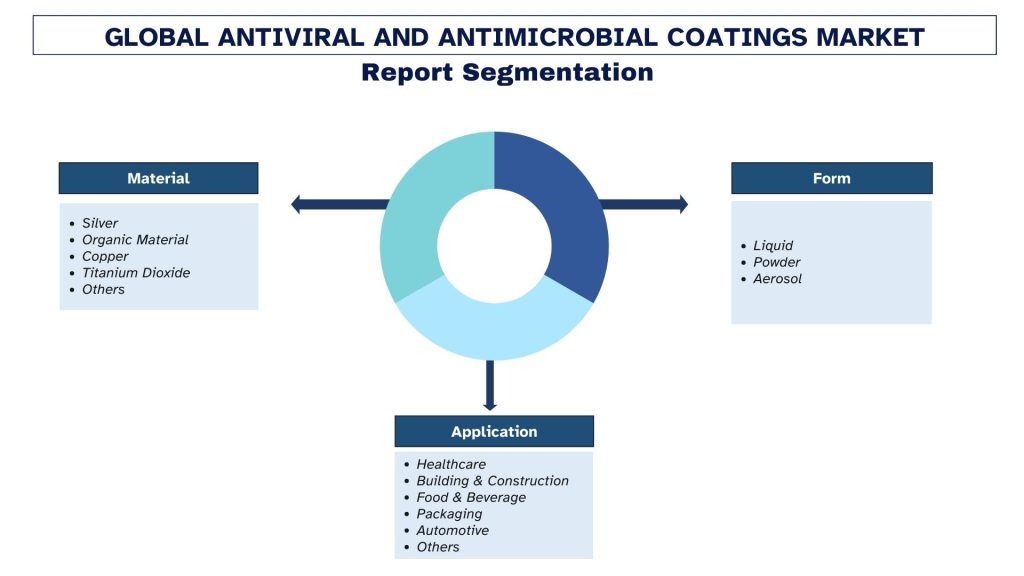
Bắc Mỹ sẽ nắm giữ một thị phần đáng kể trên thị trường
Tốc độ tăng trưởng cao của lớp phủ kháng virus và kháng khuẩn đặc biệt ở Bắc Mỹ là do các yêu cầu pháp lý ngày càng tăng đối với kiểm soát nhiễm trùng và vệ sinh công cộng trong các cơ sở khác nhau bao gồm dịch vụ y tế và thực phẩm. Các khoản đầu tư bổ sung vào xây dựng chăm sóc sức khỏe, dự kiến do biện pháp phòng ngừa tốt hơn chống lại nhiễm trùng, tiếp tục đóng góp vào nhu cầu đối với các lớp phủ này. Hơn nữa, ý thức ngày càng tăng của khách hàng về vệ sinh và làm sạch bề mặt đặc biệt sau các trường hợp COVID-19 đang thúc đẩy nhu cầu về lớp phủ hoàn thiện kháng khuẩn trong các ngành công nghiệp từ sản phẩm tiêu dùng, bao bì và ngành vận tải. Việc sử dụng ngày càng tăng các lớp phủ này trong các lĩnh vực khác nhau chứng minh sự phù hợp của chúng trong việc giảm thiểu tiếp xúc với các mầm bệnh chết người khác.
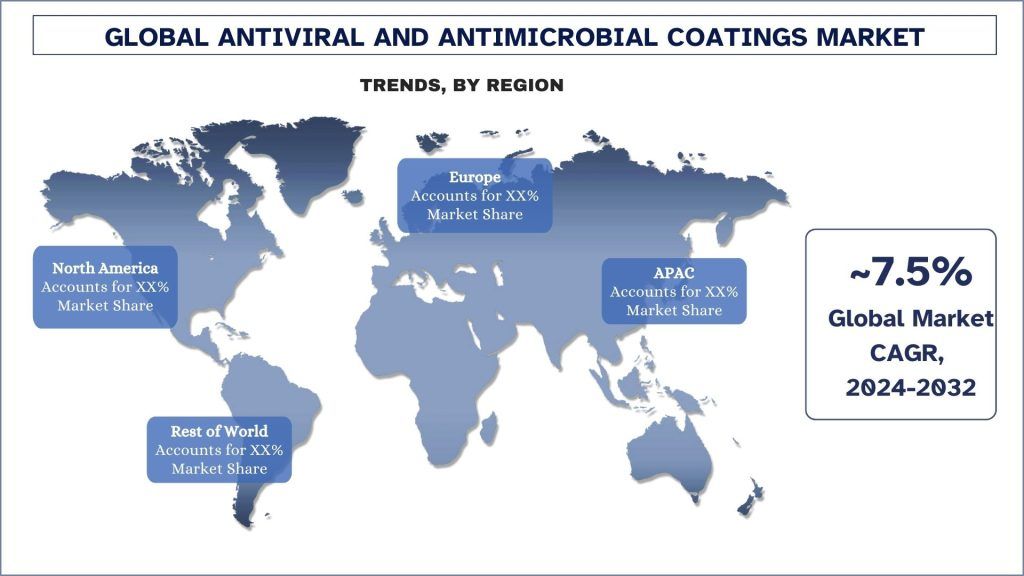
Tổng quan về Ngành Lớp phủ Kháng virus và Kháng khuẩn
Lớp phủ Kháng virus và Kháng khuẩn có tính cạnh tranh, với một số công ty tham gia thị trường toàn cầu và quốc tế. Các công ty tham gia thị trường chính đang áp dụng các chiến lược tăng trưởng khác nhau để nâng cao sự hiện diện trên thị trường của họ, chẳng hạn như hợp tác, thỏa thuận, cộng tác, ra mắt sản phẩm mới, mở rộng địa lý và sáp nhập và mua lại. Một số công ty lớn hoạt động trên thị trường là DuPont., Akzo Nobel N.V., Nippon Paint Holdings Co., Ltd., PG Industries, Inc, Lonza, NanoGraphene Inc., Sika AG, BASF SE, RPM International Inc., Sciessent LLC. Một số thương vụ M&A cùng với quan hệ đối tác đã được thực hiện bởi những công ty tham gia này để tạo điều kiện cho khách hàng các sản phẩm/công nghệ công nghệ cao và sáng tạo.
Phát triển Gần đây
- Vào tháng 2 năm 2022: Nippon Paint đã bổ sung hai sản phẩm sơn gốc nước kháng virus mới vào dòng sản phẩm của mình, nhãn hiệu PROTECTON. Các sản phẩm mới là sản phẩm sơn phủ kháng virus và kháng khuẩn cho sàn nhà và tường nội thất.
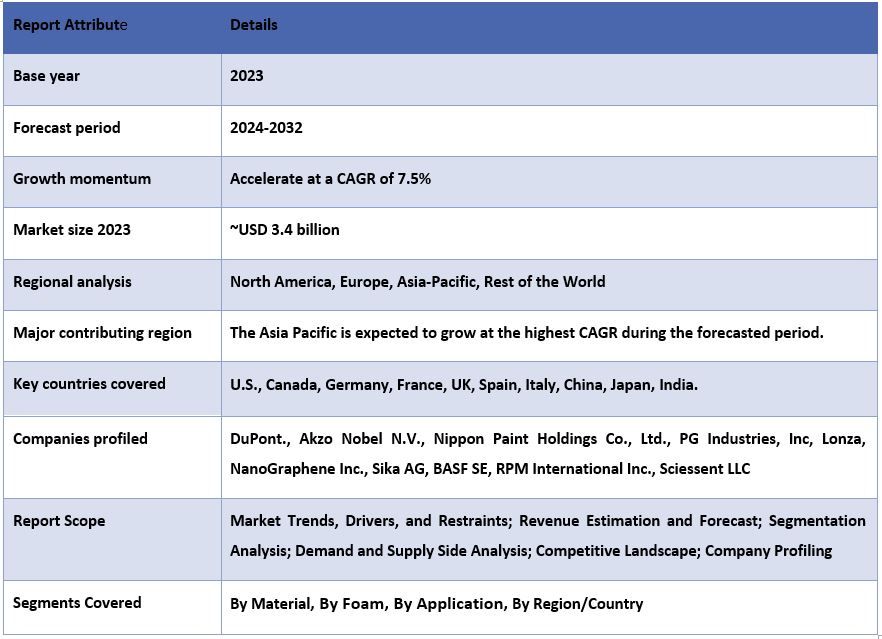
Lý do nên mua báo cáo này:
- Nghiên cứu bao gồm phân tích định cỡ và dự báo thị trường được xác thực bởi các chuyên gia hàng đầu trong ngành được xác thực.
- Báo cáo trình bày đánh giá nhanh về hiệu suất tổng thể của ngành trong nháy mắt.
- Báo cáo bao gồm phân tích chuyên sâu về các đồng nghiệp nổi bật trong ngành với trọng tâm chính là tài chính kinh doanh chính, danh mục sản phẩm, chiến lược mở rộng và các phát triển gần đây.
- Kiểm tra chi tiết các động lực, hạn chế, xu hướng chính và cơ hội hiện hành trong ngành.
- Nghiên cứu bao gồm toàn diện thị trường trên các phân khúc khác nhau.
- Phân tích cấp khu vực chuyên sâu của ngành.
Tùy chọn Tùy chỉnh:
Lớp phủ Kháng virus và Kháng khuẩn Toàn cầu có thể được tùy chỉnh thêm theo yêu cầu hoặc bất kỳ phân khúc thị trường nào khác. Bên cạnh đó, UMI hiểu rằng bạn có thể có nhu cầu kinh doanh riêng; do đó, vui lòng liên hệ với chúng tôi để nhận được một báo cáo hoàn toàn phù hợp với yêu cầu của bạn.
Mục lục
Phương Pháp Nghiên Cứu Phân Tích Thị Trường Lớp Phủ Kháng Virus và Kháng Khuẩn (2022-2032)
Phân tích thị trường lịch sử, ước tính thị trường hiện tại và dự báo thị trường tương lai của thị trường Lớp phủ Kháng Virus và Kháng Khuẩn toàn cầu là ba bước chính được thực hiện để tạo và phân tích việc áp dụng Lớp phủ Kháng Virus và Kháng Khuẩn ở các khu vực lớn trên toàn cầu. Nghiên cứu thứ cấp chuyên sâu đã được thực hiện để thu thập các số liệu thị trường lịch sử và ước tính quy mô thị trường hiện tại. Thứ hai, nhiều phát hiện và giả định đã được xem xét để xác thực những thông tin chi tiết này. Hơn nữa, các cuộc phỏng vấn sơ cấp chuyên sâu cũng đã được thực hiện với các chuyên gia trong ngành trên toàn chuỗi giá trị của thị trường Lớp phủ Kháng Virus và Kháng Khuẩn toàn cầu. Sau khi giả định và xác thực số liệu thị trường thông qua các cuộc phỏng vấn sơ cấp, chúng tôi đã sử dụng phương pháp từ trên xuống/từ dưới lên để dự báo quy mô thị trường hoàn chỉnh. Sau đó, các phương pháp phân tích chi tiết thị trường và phân tích dữ liệu tam giác đã được áp dụng để ước tính và phân tích quy mô thị trường của các phân khúc và phân khúc phụ của ngành. Phương pháp chi tiết được giải thích dưới đây:
Phân Tích Quy Mô Thị Trường Lịch Sử
Bước 1: Nghiên Cứu Chuyên Sâu Các Nguồn Thứ Cấp:
Một nghiên cứu thứ cấp chi tiết đã được thực hiện để có được quy mô thị trường lịch sử của thị trường Lớp phủ Kháng Virus và Kháng Khuẩn thông qua các nguồn nội bộ của công ty như báo cáo thường niên & báo cáo tài chính, thuyết trình hiệu suất, thông cáo báo chí, v.v. và các nguồn bên ngoài bao gồm tạp chí, tin tức & bài viết, ấn phẩm của chính phủ, ấn phẩm của đối thủ cạnh tranh, báo cáo ngành, cơ sở dữ liệu của bên thứ ba và các ấn phẩm đáng tin cậy khác.
Bước 2: Phân Khúc Thị Trường:
Sau khi có được quy mô thị trường lịch sử của Lớp phủ Kháng Virus và Kháng Khuẩn, chúng tôi đã tiến hành phân tích thứ cấp chi tiết để thu thập thông tin chi tiết về thị trường lịch sử và chia sẻ cho các phân khúc & phân khúc phụ khác nhau cho các khu vực lớn. Các phân khúc chính được bao gồm trong báo cáo, chẳng hạn như vật liệu, dạng, ứng dụng và khu vực. Phân tích cấp quốc gia sâu hơn đã được thực hiện để đánh giá việc áp dụng tổng thể các mô hình thử nghiệm trong khu vực đó.
Bước 3: Phân Tích Yếu Tố:
Sau khi có được quy mô thị trường lịch sử của các phân khúc và phân khúc phụ khác nhau, chúng tôi đã tiến hành phân tích yếu tố chi tiết để ước tính quy mô thị trường hiện tại của thị trường Lớp phủ Kháng Virus và Kháng Khuẩn. Hơn nữa, chúng tôi đã tiến hành phân tích yếu tố bằng cách sử dụng các biến phụ thuộc và độc lập như vật liệu, dạng, ứng dụng và các khu vực Lớp phủ Kháng Virus và Kháng Khuẩn. Một phân tích kỹ lưỡng đã được thực hiện về các kịch bản phía cung và cầu, có xét đến các quan hệ đối tác hàng đầu, sáp nhập và mua lại, mở rộng kinh doanh và ra mắt sản phẩm trong lĩnh vực thị trường Lớp phủ Kháng Virus và Kháng Khuẩn trên toàn cầu.
Ước Tính & Dự Báo Quy Mô Thị Trường Hiện Tại
Định cỡ Thị trường Hiện tại: Dựa trên những hiểu biết sâu sắc có thể hành động từ ba bước trên, chúng tôi đã đạt được quy mô thị trường hiện tại, những người chơi chính trong thị trường Lớp phủ Kháng Virus và Kháng Khuẩn toàn cầu và thị phần của các phân khúc. Tất cả các tỷ lệ phần trăm chia sẻ và phân tích thị trường cần thiết đã được xác định bằng phương pháp thứ cấp nói trên và đã được xác minh thông qua các cuộc phỏng vấn sơ cấp.
Ước tính & Dự báo: Để ước tính và dự báo thị trường, trọng số đã được gán cho các yếu tố khác nhau bao gồm các động lực & xu hướng, hạn chế và cơ hội dành cho các bên liên quan. Sau khi phân tích các yếu tố này, các kỹ thuật dự báo có liên quan, tức là phương pháp từ trên xuống/từ dưới lên đã được áp dụng để đưa ra dự báo thị trường cho năm 2032 cho các phân khúc và phân khúc phụ khác nhau trên các thị trường lớn trên toàn cầu. Phương pháp nghiên cứu được áp dụng để ước tính quy mô thị trường bao gồm:
- Quy mô thị trường của ngành, về doanh thu (USD) và tỷ lệ chấp nhận Lớp phủ Kháng Virus và Kháng Khuẩn trên các thị trường lớn trong nước
- Tất cả tỷ lệ phần trăm, chia nhỏ và phân tích của các phân khúc thị trường và phân khúc phụ
- Những người chơi chính trong lĩnh vực Lớp phủ Kháng Virus và Kháng Khuẩn toàn cầu về các sản phẩm được cung cấp. Ngoài ra, các chiến lược tăng trưởng được những người chơi này áp dụng để cạnh tranh trong thị trường đang phát triển nhanh chóng
Xác thực Quy mô và Thị phần Thị trường
Nghiên Cứu Sơ Cấp: Các cuộc phỏng vấn chuyên sâu đã được thực hiện với những Người có Ý kiến Chính (KOL), bao gồm các Giám đốc Điều hành Cấp cao nhất (CXO/Phó Chủ tịch, Trưởng phòng Kinh doanh, Trưởng phòng Tiếp thị, Trưởng phòng Điều hành, Trưởng phòng Khu vực, Trưởng phòng Quốc gia, v.v.) trên khắp các khu vực lớn. Các phát hiện nghiên cứu sơ cấp sau đó đã được tóm tắt và phân tích thống kê đã được thực hiện để chứng minh giả thuyết đã nêu. Thông tin đầu vào từ nghiên cứu sơ cấp đã được hợp nhất với các phát hiện thứ cấp, do đó biến thông tin thành những hiểu biết sâu sắc có thể hành động.
Phân Chia Người Tham Gia Sơ Cấp ở Các Khu Vực Khác Nhau
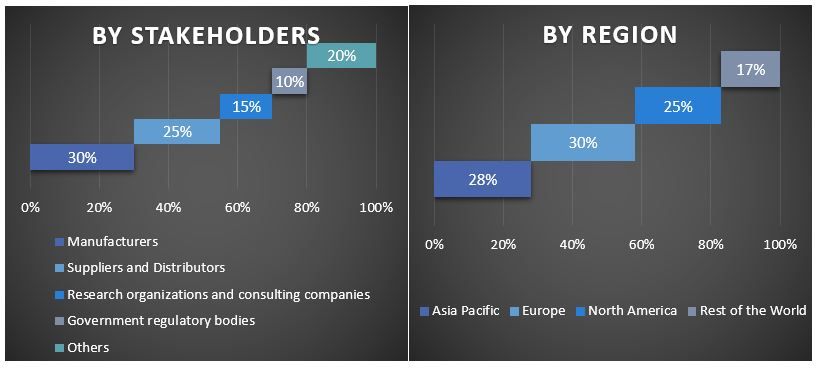
Kỹ Thuật Thị Trường
Kỹ thuật phân tích dữ liệu tam giác đã được sử dụng để hoàn thành việc ước tính thị trường tổng thể và để đưa ra các số liệu thống kê chính xác cho từng phân khúc và phân khúc phụ của thị trường Lớp phủ Kháng Virus và Kháng Khuẩn toàn cầu. Dữ liệu đã được chia thành một số phân khúc và phân khúc phụ sau khi nghiên cứu các thông số và xu hướng khác nhau về vật liệu, dạng, ứng dụng và khu vực của thị trường Lớp phủ Kháng Virus và Kháng Khuẩn toàn cầu.
Mục tiêu chính của Nghiên cứu Thị trường Lớp phủ Kháng Virus và Kháng Khuẩn Toàn cầu
Các xu hướng thị trường hiện tại & tương lai của Lớp phủ Kháng Virus và Kháng Khuẩn toàn cầu đã được xác định chính xác trong nghiên cứu. Các nhà đầu tư có thể thu được những hiểu biết sâu sắc mang tính chiến lược để làm cơ sở cho quyết định đầu tư của họ dựa trên phân tích định tính và định lượng được thực hiện trong nghiên cứu. Các xu hướng thị trường hiện tại và tương lai xác định mức độ hấp dẫn tổng thể của thị trường ở cấp độ khu vực, cung cấp một nền tảng cho người tham gia công nghiệp khai thác thị trường chưa được khai thác để hưởng lợi từ lợi thế của người đi đầu. Các mục tiêu định lượng khác của các nghiên cứu bao gồm:
- Phân tích quy mô thị trường hiện tại và dự báo của thị trường Lớp phủ Kháng Virus và Kháng Khuẩn về giá trị (USD). Ngoài ra, phân tích quy mô thị trường hiện tại và dự báo của các phân khúc và phân khúc phụ khác nhau.
- Các phân khúc trong nghiên cứu bao gồm các lĩnh vực vật liệu, dạng, ứng dụng và khu vực.
- Xác định và phân tích khuôn khổ pháp lý cho Lớp phủ Kháng Virus và Kháng Khuẩn
- Phân tích chuỗi giá trị liên quan đến sự hiện diện của nhiều trung gian khác nhau, cùng với việc phân tích hành vi của khách hàng và đối thủ cạnh tranh trong ngành.
- Phân tích quy mô thị trường hiện tại và dự báo của thị trường Lớp phủ Kháng Virus và Kháng Khuẩn cho các khu vực lớn.
- Các quốc gia lớn của các khu vực được nghiên cứu trong báo cáo bao gồm Châu Á Thái Bình Dương, Châu Âu, Bắc Mỹ và Phần còn lại của Thế giới
- Hồ sơ công ty của thị trường Lớp phủ Kháng Virus và Kháng Khuẩn và các chiến lược tăng trưởng được những người chơi trên thị trường áp dụng để duy trì trong thị trường đang phát triển nhanh chóng.
- Phân tích sâu cấp khu vực của ngành
Câu hỏi thường gặp Câu hỏi thường gặp
Câu hỏi 1: Kích thước hiện tại và tiềm năng tăng trưởng toàn cầu của lớp phủ Kháng virus và Kháng khuẩn là gì?
Q2: Động lực thúc đẩy sự tăng trưởng của thị trường Thuốc kháng virus và kháng khuẩn toàn cầu là gì?
Q3: Phân khúc nào chiếm thị phần lớn nhất trong thị trường Lớp phủ Kháng vi-rút và Kháng khuẩn toàn cầu theo Vật liệu?
Q4: Các công nghệ và xu hướng mới nổi trong lớp phủ Kháng Virus và Kháng Khuẩn toàn cầu là gì?
Q5: Khu vực nào sẽ thống trị thị trường lớp phủ kháng vi-rút và kháng khuẩn toàn cầu?
Liên quan Báo cáo
Khách hàng đã mua mặt hàng này cũng đã mua



